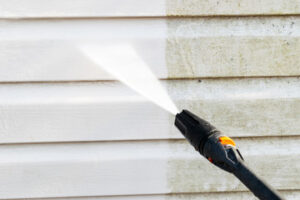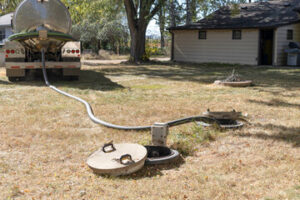Gutter Repair Murfreesboro TN is a crucial home maintenance task that protects the roof and foundation from water damage. Professional gutter contractors have a trained eye to identify vulnerable areas and enact preventative maintenance to reduce costly repairs down the line.

Gutter hangers that are loose or missing may only require a simple tightening or replacement with standard screws instead of nails. This can save homeowners time and money when compared to a full replacement.
Gutter joints play an important role in redirecting rainwater from your home’s structure and foundation. Unfortunately, over time, they may develop leaks causing water damage to walls and other surfaces. Sealing gutter seams is a relatively easy DIY project that can save you the cost and hassle of replacing your gutters. Identifying and fixing the leaks promptly is key to preventing further damage.
Identifying Leaks
During routine inspections, look for signs of leaking gutters such as water stains or pooling water near the foundation. Leaking gutters can also be a sign of other issues such as sagging sections of the gutter or blockages from built-up debris. In many cases, the problem can be remedied by tightening gutter brackets or removing and replacing damaged sections of gutter.
Before starting the repair, ensure the area is clean and free of any loose debris or old sealant. Using a putty knife or wire brush, remove any debris that is blocking the joint or creating a gap between the gutter sections. Once the area is clean, allow it to dry completely to prepare for applying new sealant.
While sealing the gutter seams, it’s important to use a waterproof and weatherproof sealant. A good option is a roof and gutter sealant such as UniBond Roof & Gutter Sealant. This durable and flexible product creates a strong bond between the gutter section and the fascia board and is formulated to resist expansion, contraction, and vibration.
Apply the sealant over the leaking gutter seam, making sure to cover all areas of the crack or gap. Smooth the sealant with a putty knife, and then allow it to dry according to the manufacturer’s instructions. Typically, this will take several hours or overnight.
Once the sealant has dried, test it for leaks by running water through the gutter system and checking for dripping or moisture near the repaired joint. If the repair holds up, then you have successfully fixed a leaking gutter seam!
Taking steps to address leaky gutters prevents costly water damage to the walls and other surfaces of your home. Incorporating regular gutter inspections, cleaning, and maintenance into your Exterior Home Maintenance routine is the best way to keep your gutters in top condition and protect your home’s foundation.
Clean the Area
The first step in the gutter repair process is to clean the area. This ensures that the repair area will be dry and free from dirt or debris. Depending on the condition of your gutters, this may require climbing a ladder and manually removing any gunk that has built up over time. Be sure to use a stable ladder that extends at least 3 feet above your gutters and always wear safety gear when working at heights. A pair of gloves protects hands from sharp objects, while a pair of safety goggles shields eyes from sealant splashes. It’s also a good idea to work with a buddy, ensuring you can both hold the ladder and assist with tools when needed.
After removing any excess gunk, look for other signs that your gutters need repair. For example, if water pools in one section of your gutters, this is an indicator that your gutters are clogged and unable to properly channel water away from your home. This can lead to basement flooding and foundation damage if left untreated.
Another problem you can check for is sagging gutter sections. These can be caused by a number of issues, including disconnected downspouts or loose connector brackets that allow the gutter to sag. In addition to this, you should also be on the lookout for cracked or chipped gutter sections, broken caulking in the seams, and missing or loose fasteners.
If you’re able to see any of these problems, it’s recommended that you make the necessary repairs as soon as possible to avoid further damage. For example, if your gutters are sagging, this means the weight of the water in them is pulling at parts of your roof structure and can cause serious damage.
It’s also a good idea to inspect your gutters while it’s raining to see how they function during a rainfall. This is a great way to identify any leaks or other issues that can only be addressed when the weather is right.
Apply the Sealant
Gutters are designed to catch water runoff from a roof and channel it away from your house. However, if they are damaged, the water will pour off the gutters and create hydrostatic pressure in the soil which can damage your home’s foundation. This is why it’s important to keep your gutter system in good working condition with regular maintenance and repair services.
The most common gutter problems are overflow, sagging, clogging, and leakage. Depending on the severity of the issue, gutter repair contractors may recommend gutter replacement or simple repairs. For example, if your gutters are leaking in several areas or they are pulling away from the fascia, replacing the entire gutter system will be necessary. On the other hand, if the leaks are localized to one or two sections of the gutter, simply sealing the area will resolve the problem.
Overflow occurs when the gutters become clogged with leaves, twigs, and other debris. If this is left unchecked, it can cause rot in the fascia boards and lead to costly repairs. Gutters with downspouts that are too small for the flow of water can also cause overflow. The best way to avoid this is by installing gutter aprons, which are easily attached along the gutter.
Leaking gutters are a serious problem that should be addressed immediately to protect your home from water damage. The caulk that holds the joints together can deteriorate over time, which causes water to seep into your home’s siding or into the foundation. Gutter repair specialists can fix leaky joints with silicone sealant or put in new gutter hangers and elbow joints if needed.
Gutter repair can be a DIY project, but it’s always a good idea to have professional assistance for large projects like gutter replacement or installation of new gutter systems. Professionals have the proper tools and knowledge to ensure that the job is done properly and safely. When working on your gutters, it’s important to use a stable ladder, wear protective gear like gloves and safety goggles, and to always work with a buddy.
Test the Seal
Gutters are the overlooked guardians of your home, silently directing rainwater away from your walls, foundation, and landscaping to prevent costly damage. However, even the most sturdy gutters suffer wear and tear that requires regular maintenance and timely repairs. If left unattended, a leaking gutter can lead to mold growth and health hazards, compromising the integrity of your home. Fortunately, with proper care and timely repair, you can extend the life of your gutters and avoid costly structural damage.
The first step in the repair process is to identify and locate the source of the leak. The easiest way to do this is by performing a visual inspection of your gutter system during or after it rains. You can also use a water hose to check for water flow through your gutters, which will help you pinpoint the source of the problem.
Once you’ve found the source of the leak, it’s time to start repairing. Using the right materials, techniques, and tools can help you achieve long-lasting results. Before beginning the actual repair work, you’ll need to clear any debris and dirt from the area around the leak. You can do this by using a ladder that’s stable and extends 3 feet or more above the gutter height. Make sure to use a buddy system and wear protective gear such as gloves and safety goggles.
When repairing your gutters, it’s important to follow the manufacturer’s guidelines for their product. For example, vinyl gutters are typically sealed with silicone, while aluminum and steel gutters require epoxy sealant. Using the incorrect type of sealant can compromise your gutters’ functionality and longevity.
Some gutter problems, like downspouts that loosened from the gutters, can be easily fixed by re-attaching the downspout outlet to the gutter with screws. For more complicated issues, it’s best to call a professional. They will have the experience and knowledge to handle your gutter repair job efficiently, safely, and effectively. They can also install a new gutter system if necessary, giving you an efficient and durable solution to protect your property.




